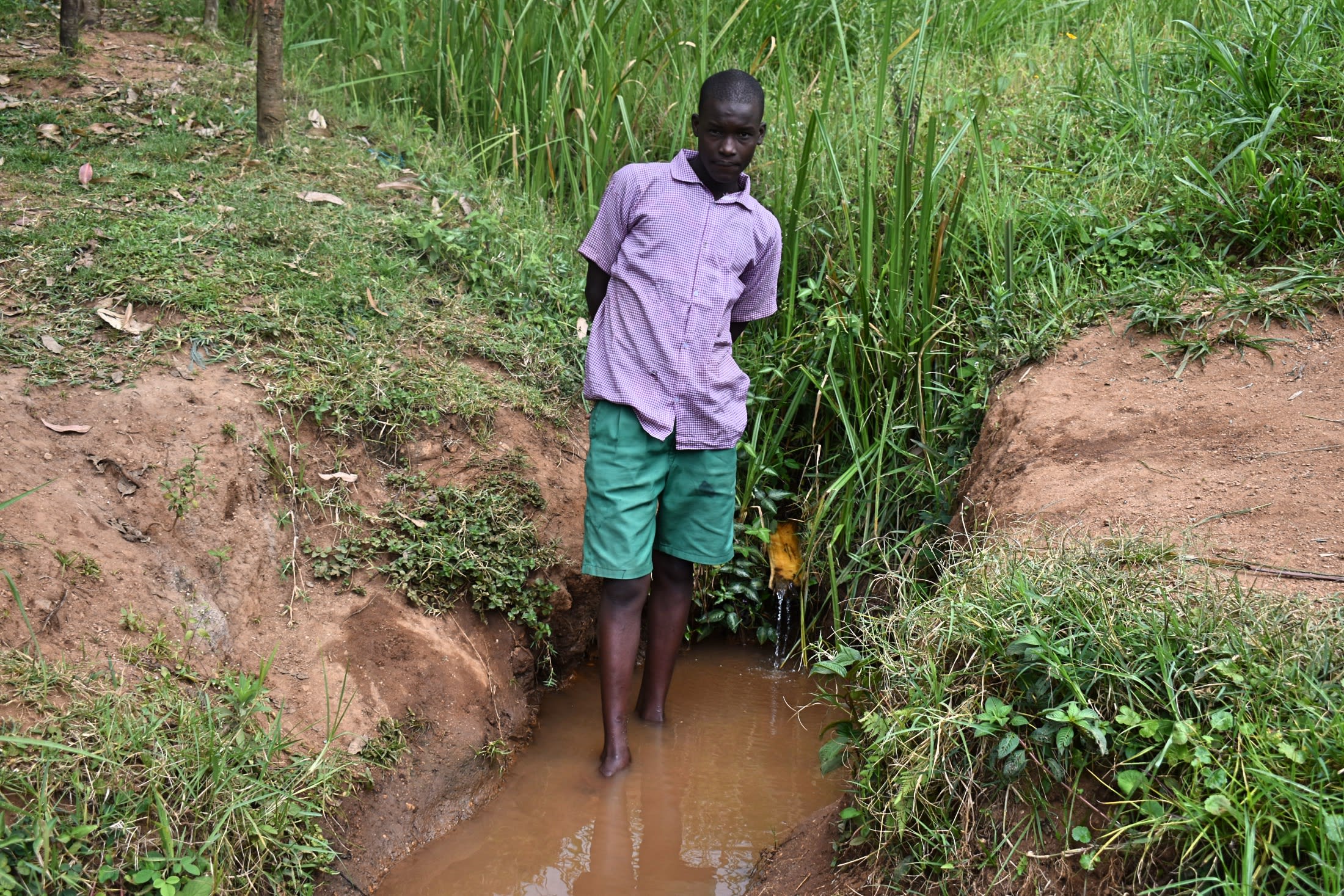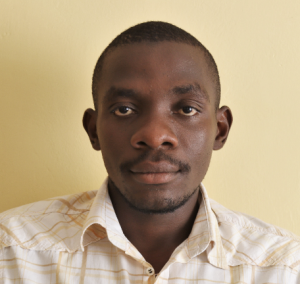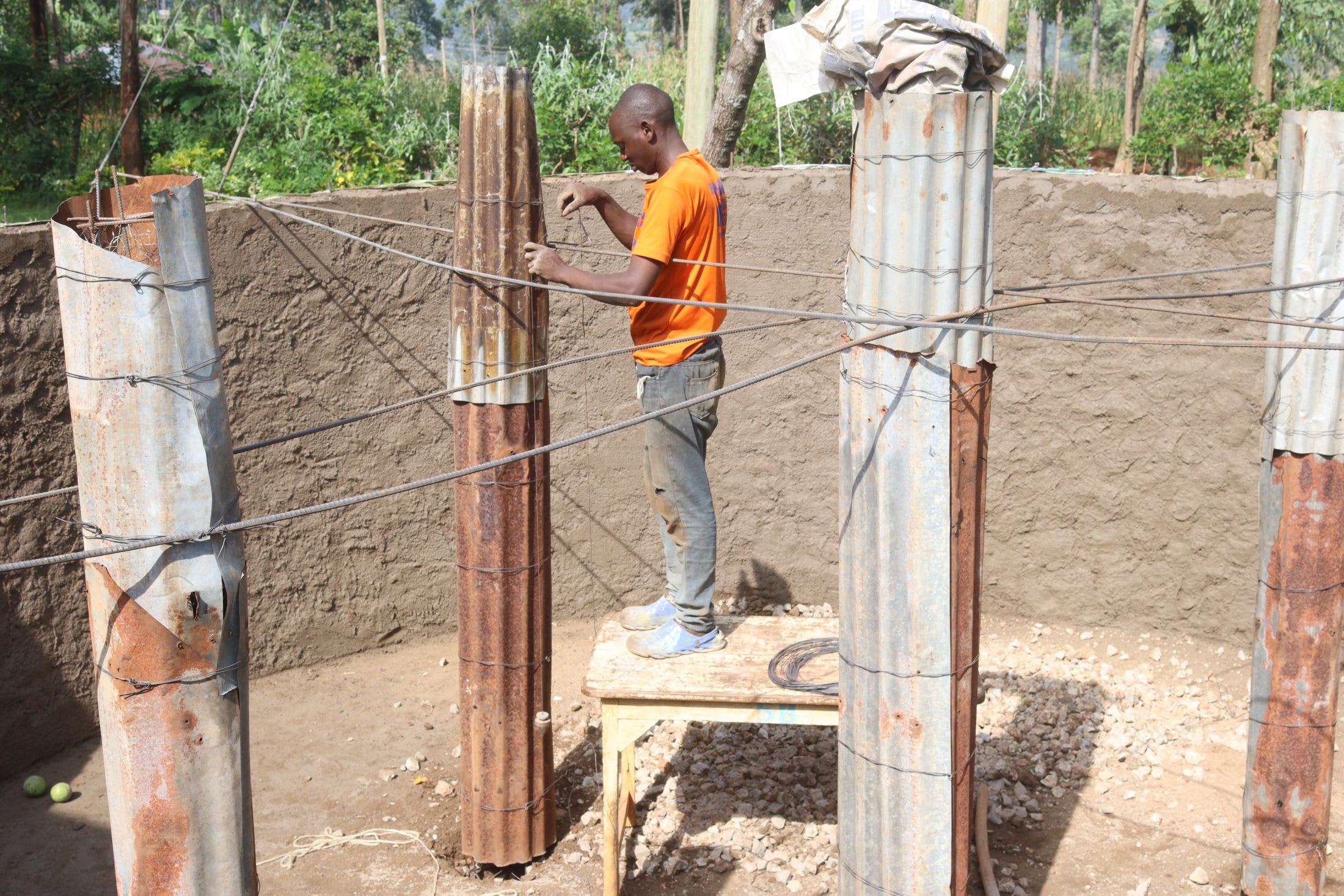Every day, along with their books, the 484 students of Gamoi Primary School haul water with them over the rocky, hilly terrain that surrounds the school—and who knows how far they had to venture to get the water in the first place. Before they even begin their school day, they are already exhausted.
"We come to school tired in the morning," said student Kevin (shown below at the school's primary water source). "Some of us start sleeping in class because of walking long distances while carrying water. Even understanding what the teacher is teaching is sometimes an uphill task."

Then, later in the day, students must leave school grounds again, scrambling up and down stone-scattered hills to the nearby spring.

"We are wasting lots of class time fetching water, especially on the days extra water is needed, like for washing classrooms," said teacher Jesca Vugutsa (pictured below). "This affects me personally because I'm also a parent here, and my son has to carry water every morning to school."

The school does have a rain tank donated by a well-wisher, but it is far too small for a school with 511 students and staff members.
"The 5,000-liter rainwater tank is grossly inadequate for a population of over 500 dependents," said our field officer, Elvis. "With less than 10 meters of the guttering system in place, the tank is unable to collect sufficient water [from the roof] even if it rains. The tank frequently runs dry."
The water students gather from substitute sources is questionable in quality and murky in color. Although the school filters the water before it is used for drinking or for the school lunch program, not all contaminants can be filtered out. Students most commonly complain of itchy throats after drinking the water at school. They also frequently fall on their way to collect water outside the school grounds and sustain injuries, which are costly for their parents to treat.
The school needs a much larger rain tank that will be able to store more water for the school to keep in reserve for Kenya's dry seasons. Students will expend less energy fetching water and have more time to concentrate in class. Hopefully, then, their lives and futures will improve.
What We Can Do:
A Rain Tank
A 75,000-liter rainwater catchment tank will help alleviate the water crisis at this school. The school will help collect the needed construction materials such as sand, bricks, rocks, and water for mixing cement. We will complement their materials by providing an expert team of artisans, tools, hardware, and the guttering system. Once finished, the tank will begin catching rainfall that will be used by the school's students and staff for drinking, handwashing, cooking, cleaning, and much more.
We and the school strongly believe that all of these components will work together to improve standards at this school, which will lead to better student academic performance and help to unlock the potential for these students to live better, healthier lives.
Handwashing Stations
The student health club will oversee the two new handwashing stations we will provide, and make sure they are kept clean and in working condition. The club leaders will fill the handwashing stations with water daily and make sure they are always supplied with a cleaning agent such as soap or ash.
VIP Latrines
Two triple-door latrine blocks will be constructed with local materials that the school will help gather—one block for girls and one for boys. All of these new latrines will have cement floors that are designed to be easy to use and clean. And with a rain tank right on school property, there should be enough water to keep them clean.
Training on Health, Hygiene, COVID-19, and More
We will hold a one-day intensive training session with students and teachers. This training will cover a wide range of topics including: COVID-19 symptoms, transmission routes, and prevention; personal and environmental hygiene; and the operation and maintenance of the rain tank, latrines, and handwashing stations. There will be a special emphasis on handwashing.
Our team of facilitators will use a variety of methods to train, including participatory hygiene and sanitation transformation, and asset-based community development. We will initiate a student health club, which will prepare students to lead other pupils into healthy habits at school and at home. We will also lead lectures, group discussions, and provide illustrative handouts to teach health topics and ways to promote good hygiene practices within the school, like handwashing and water treatment. We will then conduct a series of follow-up trainings before transitioning to our regularly scheduled support visits throughout the year.




 Rainwater Catchment
Rainwater Catchment
 Rehabilitation Project
Rehabilitation Project






































